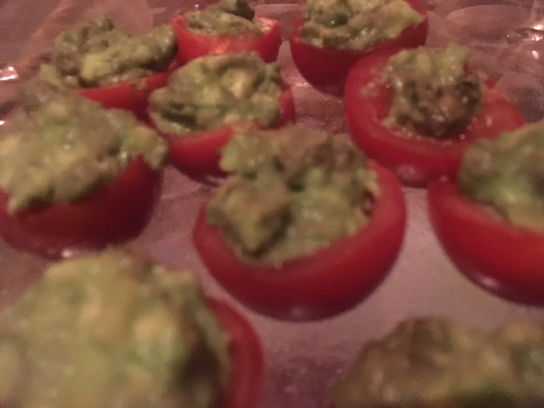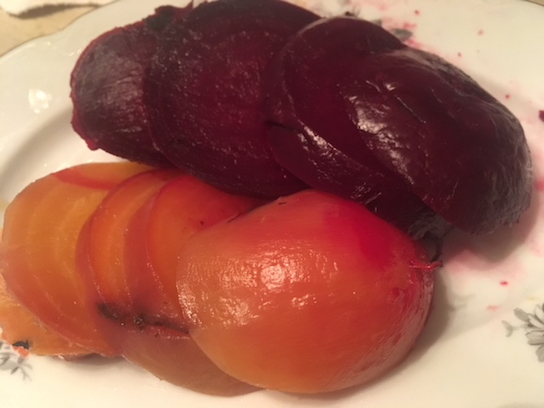Revised: Why Is Eating Yogurt Daily – And Your Gut’s Health – Creating a Healthcare Revolution?
- At February 12, 2018
- By Katherine
- In Articles, News
 0
0
Possibly the most significant nutrition discovery in decades is all about your gut, and it can make or break your health, in ways that are shocking. I’m not exaggerating when I say that it has caused a health care revolution. A healthy gut affects every organ in your body – from your brain to your toes – and, for a variety of reasons, most Americans (and that could be you) have an unhealthy gut, one that causes disease and distress. I believe eating yogurt daily is one of the only methods, and certainly the easiest one, we can use to make up for the healthy gut we abused and lost while growing up and now as adults. Why is this critical for your future and your health, as well as the health of your children, friends, relatives, and your elderly parents?
For years, I’ve wondered why people who regularly ate this versatile food seemed more likely to enjoy superior health, fight off illness more effectively, lose body fat more easily – while keeping, and even increasing muscle, seemed more alive, energetic and happy (and even if those benefits were a figment of my imagination). Thankfully, scientific research is now backing my observations of 25+ years. This has been a remarkable nutrition discovery. We always knew the microbiome (the 100 million cells in your gastrointestinal tract) was important, but the new studies show the effects of a healthy or unhealthy microbiome are vast, more than we ever could have imagined. The tired, old saying, “You are what you eat,” Is truer than we ever realized!
The health of your microbiome starts in utero, continues at birth, and in infancy. If you were breastfed, you have many health advantages. For instance, you are less likely to be obese or have diabetes later in life. That’s because breast milk is filled with healthy microbes, called probiotics (and prebiotics, which I’ll discuss later), which boost your immune system. They also decrease insulin resistance, thus lowering your blood sugar and insulin levels. Insulin is a “growth factor” which, when too high, is correlated with heart attack, colon cancer, and other cancers, and is a precurser to diabetes. It is also associated with increased inflammation, a risk factor for diseases from colds and flu, to arthritis, even mental health and risk for cognitive decline and Alzheimer’s.
One cause leading to an unhealthy microbiome in developed countries, is a diet composed of low fiber, refined foods, and a dearth of whole grains, fruits and vegetables. You need these high fiber foods (called prebiotics) to nourish the probiotics, and together in the GI tract they form the critical prebiotic/probiotic duo creating a microbiome teeming with healthy microbes that fight off chronic and acute diseases.
One study found when children are given a high level of antibiotics, they experience more obesity, diabetes and infections later in life when compared with children who received less antibiotic therapy. Of course, antibiotics save lives! But they not only destroy bad, disease-causing bacteria, they also destroy the healthy microbes/bacteria. Scientists are working on finding a balance that would make antibiotics kinder to the good microbes which naturally kill off disease.
It seems the healthiest microbiomes start in infancy, and once that window is closed, it may be very hard, if not impossible, to make up for it as adults. As you age, healthy gut microbes decrease, but when you’re elderly particularly, you are more prone to disease-causing microbes such as Salmonella and E-Coli, making the need for a healthy microbiome more important than ever.
As of yet, there is no test to measure your gut microbes, or the health of your microbiome. We don’t even know everything that we need to be looking for! The gastrointestinal tract is still quite mysterious and idiosyncratic. I work with many clients with GI issues, and their solutions vary widely.
That’s why I believe foods such as yogurt, which contain natural probiotics, are critical to your health. I push all my clients to eat yogurt daily, and I do as well. When someone tells me they don’t like it, I insist they try every flavor or type imaginable until they find one they enjoy. There are even yogurts that are more like desserts, so I encourage people to enjoy those if those are the only yogurts they find delicious (yes, deliciousness is important!). Plain Greek yogurt can be used in place of sour cream in recipes.
Why Is Eating Yogurt Daily – and Your Gut’s Health – Creating a Health Care Revolution?
- At February 12, 2018
- By Katherine
- In Articles, News
 1
1
Possibly the most significant nutrition discovery in decades is all about your gut, and it can make or break your health, in ways that are shocking. I’m not exaggerating when I say that it has caused a health care revolution. A healthy gut affects every organ in your body – from your brain to your toes – and, for a variety of reasons, most Americans (and that could be you) have an unhealthy gut, one that causes disease and distress. I believe eating yogurt daily is one of the only methods, and certainly the easiest one, we can use to make up for the healthy gut we abused and lost while growing up and now as adults. Why is this critical for your future and your health, as well as the health of your children, friends, relatives, and your elderly parents?
For years, I’ve wondered why people who regularly ate this versatile food seemed more likely to enjoy superior health, fight off illness more effectively, lose body fat more easily – while keeping, and even increasing muscle, seemed more alive, energetic and happy (and even if those benefits were a figment of my imagination). Thankfully, scientific research is now backing my observations of 25+ years. This has been a remarkable nutrition discovery. We always knew the microbiome (the 100 million cells in your gastrointestinal tract) was important, but the new studies show the effects of a healthy or unhealthy microbiome are vast, more than we ever could have imagined. The tired, old saying, “You are what you eat,” Is truer than we ever realized!
The health of your microbiome starts in utero, continues at birth, and in infancy. If you were breastfed, you have many health advantages. For instance, you are less likely to be obese or have diabetes later in life. That’s because breast milk is filled with healthy microbes, called probiotics (and prebiotics, which I’ll discuss later), which boost your immune system. They also decrease insulin resistance, thus lowering your blood sugar and insulin levels. Insulin is a “growth factor” which, when too high, is correlated with heart attack, colon cancer, and other cancers, and is a precurser to diabetes. It is also associated with increased inflammation, a risk factor for diseases from the cold, to arthritis, even mental health and risk for cognitive decline and Alzheimer’s.
One cause leading to an unhealthy microbiome in developed countries, is a diet composed of low fiber, refined foods, and a dearth of whole grains, fruits and vegetables. You need these high fiber foods (called prebiotics) to nourish the probiotics, and together in the GI tract they form the critical prebiotic/probiotic duo creating a microbiome teeming with healthy microbes that fight off chronic and acute diseases.
One study found when children are given a high level of antibiotics, they experience more obesity, diabetes and infections later in life when compared with children who received less antibiotic therapy. Of course, antibiotics save lives! But they not only destroy bad, disease-causing bacteria, they also destroy the healthy microbes/bacteria. Scientists are working on finding a balance that would make antibiotics kinder to the good microbes which kill off disease naturally.
It seems the healthiest microbiomes start in infancy, and once that window is closed, it may be very hard, if not impossible, to make up for it as adults. As you age, healthy gut microbes decrease, but when you’re elderly particularly, you are more prone to disease-causing microbes such as Salmonella and E-Coli, making the need for a healthy microbiome more important than ever.
As of yet, there is no test to measure your gut microbes, or the health of your microbiome. We don’t even know everything that we need to be looking for! The gastrointestinal tract is still quite mysterious and idiosyncratic. I work with many clients with GI issues, and their solutions vary widely.
That’s why I believe foods such as yogurt, which contain natural probiotics, are critical to your health. I push all my clients to eat yogurt daily, and I do as well. When someone tells me they don’t like it, I insist they try every flavor or type imaginable until they find one they enjoy. There are even yogurts that are more like desserts, so I encourage people to enjoy those if those are the only yogurts they find delicious (yes, deliciousness is important!). Plain Greek yogurt can be used in place of sour cream in recipes. I used it on my Swedish waffles (picture above), along with fruit, and it’s a delight!
No Time to Cook? No Problem!
- At February 04, 2018
- By Katherine
- In News, Recipes
 0
0

Katherine’s Quick and Easy Soft or Fried Tacos with Light Cheese and Chopped Tomatoes, Onions and Jalapeno Peppers
No one wants to cook anymore. Who can blame them? We’re all so busy. When you get home from work, you’re exhausted, right? Simply too tired to cook a meal, or not willing to use up valuable relaxation time for cooking. No longer do we have the luxury of stay-at-home moms or dads who slave over a properly balanced home cooked meal every day. Personally, I spent so many years developing and testing recipes for my books, I’m sick of cooking myself. So I devote a lot of my “recipe” development time these days looking for recipes that don’t need a recipe… you know, meals whipped up in minutes without any rules.
The biggest challenge for most people is after-work dinners. But I’ve found many good solutions for creating easy, tasty and quick meals. Some take literally five minutes.
One of my favorites is an open-faced taco. I buy small, thin, whole corn tortillas and make either a soft or a fried version. But the ingredients are the same. Tomatoes are notoriously bad this time of year, but I find the smaller tomatoes on a vine excellent. I keep them on the counter for days – even weeks – and their flavor concentrates.
Katherine’s Quick and Easy Soft or Fried Tacos with Cheese, Chopped Tomatoes, Onions and Jalapeno Peppers
other toppings include avocado, fish, shrimp, chicken chunks, you name it!
1 serving:
Medium sized plate
2 Taco shells
2 Bonbel light cheese rounds
Canned Jalapeno pepper slices, to taste
Chopped FreshTomatoes, to taste
Chopped Fresh Sweet Onions, to taste
Chopped Fresh Celery (optional)
Chopped Fresh Avocado (optional)
Flaky White Fish Filet (optional)
Chopped Fresh Cilantro (optional)
Salt and Freshly Ground Pepper
Place the 2 tacos on the plate, top with the cheese and jalapeno pepper slices. Microwave for about a minute, until the cheese has melted. Pile on the remaining veggies, cilantro, salt, pepper, and any other toppings you’ve chosen. Roll up and eat!
For the fried version, I add a little canola or olive oil to a non-stick pan. When hot, I put the tacos in and brown on one side. Flip over and top with the cheese, veggies and other toppings. Once the cheese melts, they’re ready to eat.
I buy the thinnest corn tortillas I can find. At only 50 calories each, and with mainly veggies, you have a spicy, filling low-calorie meal – perfectly balanced – that everyone loves. For the guys who need more – eat more! It’s just more nutrition! To add more calories, pile on the cheese.
Other toppings can be fish, shrimp, chopped chicken, avocado… really, anything you like. I’ve discovered a spicy frozen fish filet that’s ready in minutes that I think works perfectly.
Seize the New Year!
- At January 10, 2018
- By Katherine
- In Articles, News
 0
0

What are your hopes, dreams and desires for 2018? Have you reached and sustained your health and weight goals? The new year is a valuable opportunity to improve the quality of your life and happiness. Come over, tell me about your goals and dreams so I can help you accomplish them in 2018! Here are some ideas to start with…
Now, move mindfully into 2018 filled with ideas, possibilities and plans! Analyze people who will continue to be important, ideas to explore, places to spend time, important events and things to carry over from last year to this year.
CREATE A “SENSE OF URGENCY”
An important aspect of making major changes in the world or in your own life is to feel a sense of urgency about your goal. A sense of urgency, according to The Dalai Lama in “The Art of Happiness” and our “western style” research, can be achieved two ways:
1) Remind yourself of your positive vision for success. For example, visualize yourself at your goal weight, healthy, feeling energetic and confident (see “Dream” in my book, Diet Simple). Is there a special event coming soon? A wedding? Reunion? Summer at the beach? You get the idea. But also…
2) Ponder the negative consequences of not making a particular change (a little fear can be a good thing – but just a little). For instance, in the morning as you’re considering two options: getting out of bed to exercise or sleeping just a little longer. Ask yourself: “Do I want to feel good today? Or do I want to feel crummy today?” Another example, as you’re driving home from work and deciding to grab some carry-out or to go home to eat the healthy meal you’ve already planned. Ask yourself: “Do I want to achieve my weight loss goal (insert positive vision here) or will I accept being the same weight and having the same health problems for another year?” “Do I want to stop taking these darn medications or will I be taking them forever – and even increasing the dosage? What will my doctor say?” “What kind of example am I setting for my children, my spouse? Is this a behavior I can be proud of?” etc. You get the idea…
ACHIEVE INCREASED HAPPINESS
If you want to be happy, outline the consequences of your actions and act on your long term goals when making a decision to do something or not. Ask yourself “Which decision will improve my life?” Also, ask yourself, “Which decision may feel good right now but is counterproductive and will prevent me from achieving my goal?” helps you grow and become a happier person. It increases your general happiness level because you are making decisions which contribute to your long-term well-being.
THE DOWNWARD SPIRAL OF GIVING IN
Usually, when you do something that feels good momentarily, such as giving in and staying in bed for 30 more minutes of sleep in the morning instead of exercising, or grabbing a coffee cake at the coffee shop when you originally planned on just buying coffee, your happiness level may increase (“oooh, this feels yummy!”) – but it’s only a temporary blip of happiness. It goes back to the same level it did before – once the temporary experience wears off – and nothing changes for the better in your life. You may even become more depressed as you give-in to these unfulfilling momentary desires and continue into a downward spiral.
MAKE THE HARDER, BUT MORE SATISFYING CHOICE
If, instead, you say to yourself, “I’m getting out of bed NOW! I’ll feel terrible if I don’t, and I’ll never achieve my goals,” or “Will stopping to get carry-out change my life for the better? I’d be better off going home and eating something healthy as I want to lose weight, lower my cholesterol, wear that special outfit, etc,” or “I really don’t need that coffee cake, and I’ll feel terrible after eating it, and will it make me happier at the end of the day?” “Will this increase my happiness for the short term? Or for the long term?” Another more extreme example might be a drug addict relapsing. It feels great momentarily, but the feeling doesn’t last.
When you make a more thoughtful decision, which contributes to a better life – physical or psychological – you are more likely to achieve your life’s hopes, dreams and goals. You can actually increase your happiness level, feel happier more often and grow as a person.
WHY IT’S NOT ALWAYS EASY
There are so many things distracting you. It is not always easy in our society to make healthy decisions. It’s easier – and the norm, in fact – to be overweight and unhealthy. But, I’m convinced it is possible to be healthy in an unhealthy world with planning, practice, determination, and support (I’m here any time you need me!) – Besides, what’s the alternative?
It takes effort to train your mind to work this way, but this is how we become better people and we advance as a society.
Call me to help you achieve your New Year’s Goal and keep the results!
The New Tax Bill Could Damage Non-Profits & Charities: Give now!
- At December 23, 2017
- By Katherine
- In Articles, News
 0
0
To get the most out of your philanthropic dollar, donate TODAY to your favorite charity. The new tax bill will have a major impact on charitable and non-profit organizations around the world. It takes effect January 1, 2018 and “would fundamentally weaken the ability of charitable organizations to raise money, provide services, and benefit our communities. Charitable giving could drop as much as $20 billion a year,” according to UNICEF’s website (United Nations International Children’s Emergency Fund), which is an organization which “works for the survival, protection, and development of children worldwide.” The UNICEF website added, “If you’re no longer going to be itemizing deductions then you might maximize your charitable contributions before year’s end,” quoting H & R Block, a tax preparation and filing service.
A charitable organization I’m most intimately involved with is The Salvation Army. I spend several hours per week there counseling recovering drug and alcohol users on how to live healthy lifestyles once they’re ready to face the world. Many of them have never known love in their lives. Some are raised by alcoholic, drug-addicted or absent parents or families; they are often physically, sexually and emotionally abused, homeless and desperate. They have nowhere else to go except The Salvation Army where they are welcomed with open arms and hearts.
A particular story shocked me, but it is just one out of many. One of my clients, at the age of five, was thrown down the stairs by her mother. After she tumbled to the bottom of the stairs her mother jumped on her head, cracking her skull. She was then taken away from her mother and sent to live with alcoholic relatives who abused her. This is according to her private medical chart; the young woman did not speak of it.
Another man in his forties was unjustly incarcerated for 22 years. He was finally exonerated based on new evidence, but the best of his life was over. Amazingly, as many of my clients there, he had a positive attitude when speaking with me, and said he felt “blessed” (his words), but has been struggling with heroin addiction. Again, he didn’t share his tale of woe, it’s something I had to read about in his personal history, which as a medical professional, is part of my duties: to understand a person’s life, history, health, etc. so I can help them to the best of my ability.
Many of my clients there have experienced injustices of all kinds. For instance, being incarcerated for nine or more years simply for “intent to distribute” drugs. Yes. That is a crime, but I feel the punishment is excessive. Then these poor souls become lost in the system – if they hadn’t already, torn from their families, uneducated, and damaged with nowhere to go except back to their negative environments.
Americans have always been generous people with big hearts. Please give now to The Salvation Army, one of the highest rated charities in the world and, of course, a personal favorite. But it is just one of millions, like UNICEF that make a difference in peoples’ lives. You could contact me (Katherine@PersonalizedNutrition), if you like, about medical supplies needed!
Katherine’s Top 40 Healthy Holiday Tips – Listen to the Podcast!
- At December 19, 2017
- By Katherine
- In Articles, News
 0
0
Personalize your favorite strategies for enjoying yourself while staying healthy and fit through the holiday season. Listen to my “Top 40 Mental Tricks, Substitutions, Habits & Inspirations for the Holidays” on “The Boost” Podcast with Elena Lipson – and me!
The holidays are a time for celebrating life and for bringing friends and families together. They also mean many opportunities for socializing, eating and drinking. My belief is that you can do it all, have fun, feel great and still stay in shape and good health during the holidays with just a little planning and support. Besides, what’s the alternative?
Even if you’ve mastered your daily routine of self-care, the holidays present new challenges like travel, crazy schedules, fattening delicious foods everywhere, increased family and work obligations and pressures.
On the “The Boost Podcast,” I remind you, among other things, that you can eat with abandon, even your favorite holiday foods, like peppermint bark or potato pancakes, you can sleep more, reward yourself with sexy lingerie or a massage, go to great parties… In fact, you should!
Diet Simple Tip# 132 For Party Goer’s: The 25 Percent Blowout!
- At December 04, 2017
- By Katherine
- In Articles, News
 0
0
Here’s some rocket science: What happens when you go to four or five parties in a week, and you eat yourself silly at each one? You’ll make a good social impression, but the impression on the scale at the end of the week will be even more impressive.
It’s difficult for serious party goers to keep food intake and calories under control. Every sideboard and dining table is loaded with food, and every bottle is filled with caloric libations.
In Diet Simple’s Chapter, “The Party Goer’s Guide to Perfect Weight,” which is especially appropriate for party animals, anyone who entertains (or is entertained) frequently for pleasure or for business, or those who go home for the holidays, Tip #132, “The 25 Percent Blowout,” shares sage advice:
At the height of the holiday season, you might find yourself invited to four parties in a week. Go to all of them – and indulge at one.
**Excerpted from Diet Simple: 195 Mental Tricks, Substitutions, Habits & Inspirations
Tip# 139: Give Away Leftovers! 5 Ways to Stay Slim Through the Holidays
- At November 24, 2017
- By Katherine
- In Articles, News
 0
0

Goody’s Vegetable Soup (made with turkey stock and leftover Thanksgiving turkey) in “Diet Simple: 95 Tricks, Substitutions, Habits & Inspirations” A perfect way to enjoy the holidays and stay slim, too!
In tip#139 of Diet Simple, I share a little reminder that… it’s not the holiday meal that puts the weight on, it’s eating the high calorie leftovers again… and again… and again… on Friday… Saturday… Sunday…and beyond… Get rid of them (I’m pretty sure a homeless shelter would appreciate them)! But keep the tasty and healthy turkey, bones, and veggies to make a yummy soup that’ll soothe your loved ones’ souls – and bodies.
Splurging is great. but I recommend you get back to normal eating as soon as possible. Think of the Thanksgiving feast as one lovely day, and then, indulge yourself with the love of friends and family the rest of the weekend. Besides, isn’t love, friendship and thankfulness the most important parts of the holidays?
Soup is perfect for 5 reasons…
Soups are an especially good use for your leftovers. Why? They are satisfying in many ways: First, they are easy to throw together (as an example, Goody’s Vegetable Soup in “Diet Simple). Second, psychologically, soups warm your body and soul. Third, physically, they are yummy and filling, yet low in calories. Fourth, soups using Thanksgiving leftovers are brimming with nourishment from the most nutrient-dense foods available: veggies! And fifth, soups slow you down, calm you, help you eat more leisurely and mindfully. And mindfulness helps your body and mind in surprising ways.
I’ve written about the “Science of Slimming Soups,” in Diet Simple and on my blog, and you’ll be amazed at the results!
Light and Creamy Mashed Potatoes for the Thanksgiving Table
- At November 23, 2017
- By Katherine
- In News, Recipes
 0
0
Marion Burros’ Streamlined Mashed Potatoes
(Excerpted from “Diet Simple: 195 Mental Tricks, Substitutions, Habits & Inspirations”)
Potatoes have more potassium than any raw fruit or vegetable, even a banana. Potatoes contain half your requirement for Vitamin C. They rank 5th out of 42 vegetables tested for antioxidant capacity, coming ahead of broccoli, cabbage, and tomatoes. A 5.3 ounce serving of potatoes have only 110 calories. Potatoes could sustain your body healthfully with just a few dairy products and oil added. Think of all the cultures through hundreds, and thousands of years, which survived on potatoes… Scandinavians, Russians, Irish, Peruvians… You get the picture!
I can’t imagine a better comfort food!
Serves 6
1 pounds unpeeled thin-skinned potatoes (Yukon Gold or other boiling potatoes), scrubbed and sliced 1/4 inch thick
2 Cups Nonfat Buttermilk, or more
Salt and freshly ground black pepper to taste
Garnish with chopped parsley (optional)
1. Cook the potato slices in water to cover until tender, about 10 minutes. Do not let them get so soft that they start to disintegrate; that makes them watery. Drain and mash the potatoes – peel and all – in a food mill, through a ricer, or with a potato masher.
2. Stir in the buttermilk until the potatoes become creamy. Season with salt and pepper. Add chopped parsley to taste (optional)
NOTE: The potatoes can be refrigerated, if well covered, but they are best when fresh. To serve, place in a glass dish, cover wtih plastic wrap, and reheat in the microwave for about 8 minutes on high. Stir once or twice while reheating. If the potatoes become too dry, stir in additional buttermilk. Use waxy potatoes for boiling like Red Bliss or fingerlings. Yukon Golds are all-purpose.
Streamlined Mashed Potatoes is excerpted from Cooking for Comfort (Simon & Schuster 2003) by Marion Burros. Burros is a columnist and writer for The New York Times since 1981, she lives in New York City and outside Washington, D.C.
A Fall Menu for Guests with Dietary Food Restrictions

Butternut Squash Soup with Curry and Ginger – from “Diet Simple Farm to Table Recipes: 50 New Reasons to Cook in Season!” (squash, onions and ginger from Farmers Market)
Cooking for special guests with food restrictions can seem an ominous task. It often means that none of your favorite special occasion recipes work, risking disappointing your guests with a less than delcious meal.
I was recently faced with entertaining a friend who couldn’t eat grains, starch, sugar, dairy, eggs, legumes, peanuts, almonds, garlic, or alcohol … You get the picture! But my friends said I did it well, so I thought I would share my menu with you.
First, since my food choices were limited, the recipes were likely going to be fairly simple. so choosing the best ingredients was paramount. Obviously, that meant I bought just about everything from the local Farmers Market.
As Hors d’oevres, I served Guacamole Stuffed Cherry Tomato Halves. On most diets, vegetables are unlimited, so you can’t go wrong with them. My quacamole was simply mashed avocado with salt and pepper. You can stuff the cherry tomato halves with anything – tuna or smoked salmon salad, tabouleh, etc. I also served pistachio nuts in a side dish (always with a spoon to prevent spreading germs).
As the first course, I served Butternut Squash Soup with Curry and Ginger, always a hit. I created this recipe years ago, because I couldn’t find a butternut squash soup recipe with no cream. Of course, this made it perfect for this special menu. All I had to do was to excluded the garlic.
As the main course, I served a crab cake, topped with a tiger shrimp and 2 scallops as decoration. All bought that day from Stachowski’s in Georgetown. The guests were overwhelmed with the freshness, sweetness and delicacy of the seafood. And I confirmed that nothing in the crabcake was verboten. With most of these diets, protein is not limited, but I chose seafood to be on the healthier side. My side dishes were Haricot Vert sauteed in olive oil with sweet onions and red peppers.
And for color, golden and red beets simply boiled with salt and sliced, were served alongside.
Of course, I really wanted dessert to be special. But I was limited to fruit. Hmmm… I’ve eaten roasted fruit, like apricots and peaches, and sauteed fruit in butter and brown sugar. The butter and brown sugar were out, so I decided to roast fruit, which I had never done before. I looked up a few recipes, found fresh pineapple and fresh figs at the grocery store and thought long and hard about what I could roast them in. Could they be roasted alone? I couldn’t find any recipe this simple and I was afraid to try it. It seemed that the fruit would need some kind of fat and sweetener to make it special. But I couldn’t use butter or sugar. Instead, I chose coconut milk, hazelnut oil, and a little honey. I tossed the fresh pineapple pieces and fig halves, in a bowl with the mixture, added pecans, and placed them on a cookie sheet with parchment paper (nothing sticks to it). Roasted til the pineapple was golden brown.
But that wasn’t enough. I needed something creamy with it… ice cream or whipped cream were out of the question. But I heard that coconut milk was popular with the alternative dieting crowd (even though it riases bad cholesterol more than anything else!), so I looked up how to make something creamy out of it. Turns out, it gets nice and fluffy when whipped with a beater. I served it alongside the fruit. And it was a hit!
With a willingness to experiment, try new recipes, and to please your friends who want to eat great food but may be on special diets, it’s worth it to take your cooking into a new direction. My dinner was probably hit and miss. But my friends appreciated my effort and I’m sure enjoyed at least most of it!






















